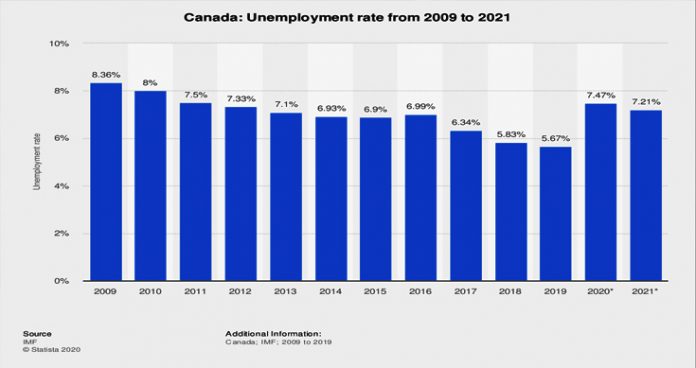Ottawa: Canada unemployment rate dropped to 8.9 percent in October from September 9 percent in the midst of the ongoing COVID-19 pandemic, as indicated by official figures. This reading just barely missed the market expectation for 8.8%.
Statistics Canada on Friday announced that employment rose to 84,000 in October in the wake of growing by an average of 2.7 percent each month since May, as reported by the Xinhua news office.
Employment increases in many industries were mostly offset by a reduction of 48,000 in the accommodation and food services industry in October.
In April, the number of employees directly impacted by the pandemic-induced economic closure topped at 5.5 million, including a drop of 3,000,000 for jobs and a 2.5 million rise in absences from work.
By October, the comparable figure was 1.1 million, including a drop of 636,000 for employment and an increase of 433,000 in the number of Canadians who were employed however working less than half of their typical hours.
The vast majority of the employment increase in October was in full-time jobs which saw an ascent of 69,000 occupations and the number of individuals working part-time was essentially unchanged.
On a year-over-year basis, the full-time occupation was down 3.1 percent, compared with a decline of 3.4 percent for part-time work.
From May to September, average month to month employment growth in Canada was 457,000, permitting the labor market to regain about 75% of the positions lost during the pandemic. In September, the economy added 378,200 occupations.
With October’s outcome, work in Canada stays 3.3% beneath the level in February, or prior to the pandemic struck earnest in North America.
Financial experts had forewarned October’s outcome would mark a slowdown, as the nation’s most population provinces- Ontario and Quebec – forced limitations on the hospitality business, as well as cinemas and gyms, to contain a surge in confirmed COVID-19 cases that started in September.
Different regions of the nation are presently mulling or implementing their own form of limitations, as COVID-19 case counts grow. Canada unemployment
with IANSinput


